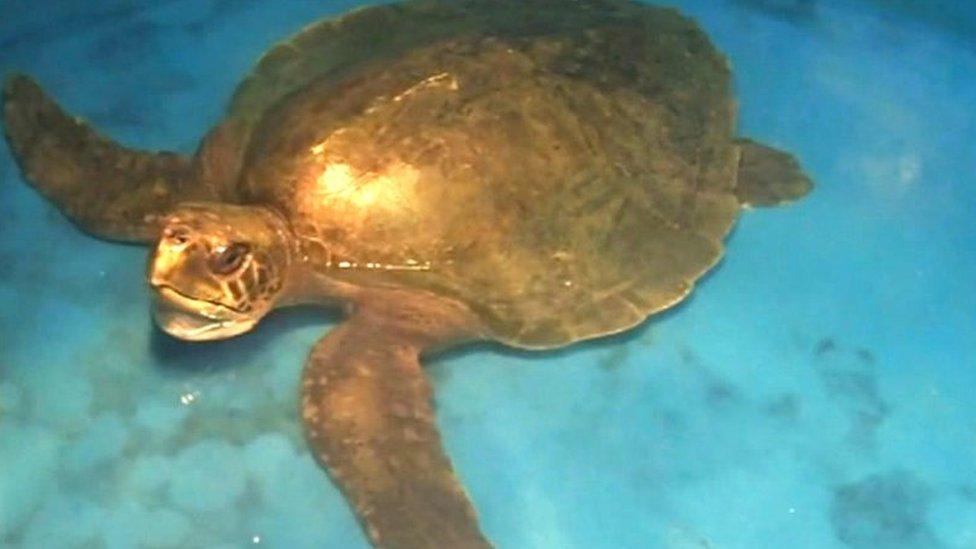Olive ridley turtle found injured off Seaford beach dies
- Published
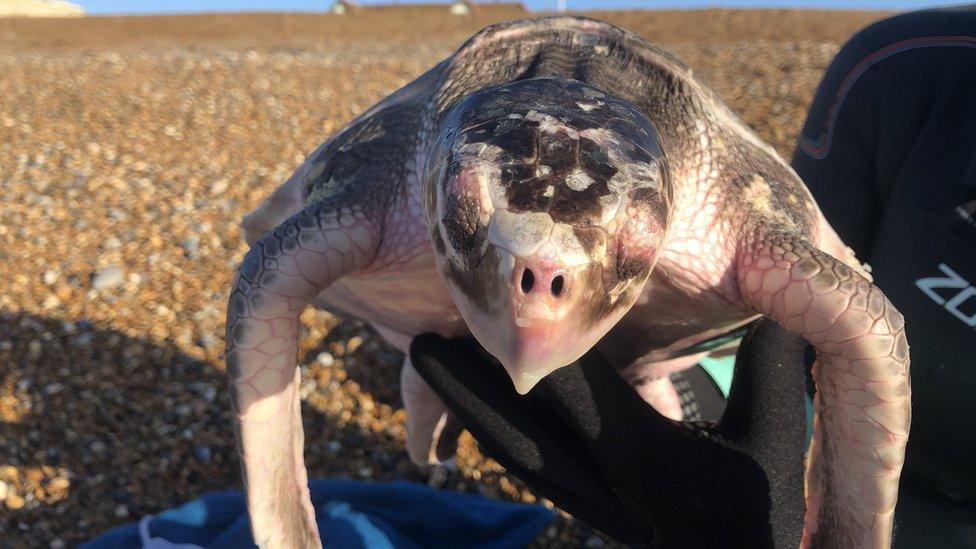
The olive ridley turtle is normally found in much warmer or tropical waters
A turtle found stranded off the south coast of England by two women out swimming has died.
The injured olive ridley turtle, usually found in much warmer waters, was spotted 20m off Seaford beach in East Sussex on Saturday.
Emma Holter and Lisa Glandfield brought the reptile to shore and saw it had injuries to its face and shell.
It was taken to Brighton Sea Life centre for emergency care but could not be saved.
In a statement, the centre said: "The female turtle presented with a very low body temperature and severe dehydration, as well as some other injuries.
"Despite the very best efforts of our specialist marine biology and veterinary teams, the turtle hasn't survived."
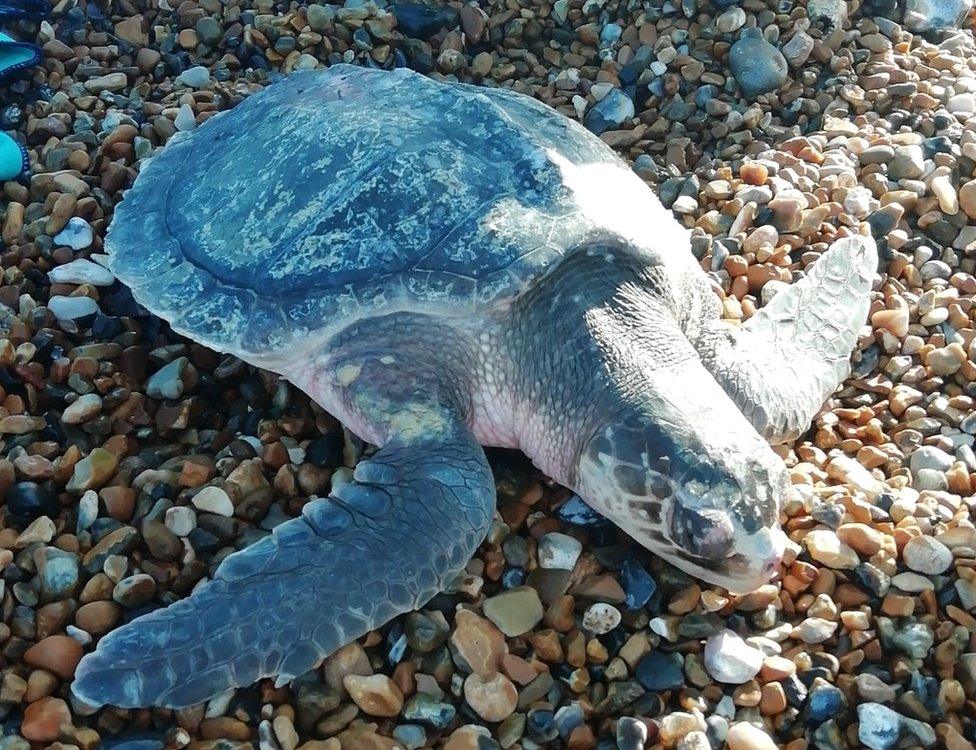
The turtle was less than half a metre in length but they can grow up to about 75cm
The centre said the species was normally found in warmer climates and it was unsure why it was in cold, shallow waters.
Announcing the animal's death "with great sadness", it thanked everyone involved in the rescue attempt.
Dr Peter Richardson, head of ocean recovery at the Marine Conservation Society, said a number of juvenile turtles washed up on UK beaches during winter "usually after persistent south-westerly winds that create surface currents that wash them out of the Atlantic and into our chilly seas".
But this olive ridley is only the second UK record of the species, he said, adding that they "seem to be quite fragile and rarely survive after stranding, even with good rehabilitation".

Olive ridley turtle

The name of the olive ridley derives from the generally greenish colour of its skin and shell
Has an average life span of 50 years in the wild
Can weigh up to 100lbs and grow up to about 75cm
Named after the greenish colour of its skin and shell
Normally found in warm waters of the southern Atlantic, Pacific and Indian Oceans
Although widely considered the most abundant of marine turtles, its numbers are declining quickly
Despite protections, nesting females are slaughtered for their meat and eggs are stolen
Fishing nets also pose a significant risk, frequently snagging and drowning individuals

Nettie Glandfield was with her mother Lisa when the reptile was brought to shore.
"We thought she may be dead, but every now and then she would make a small movement," she said.
"The beach was windy, so we wrapped her in a wet towel to keep her a bit warmer, and sheltered, until the vet arrived.
"She wasn't very big, about the size of a Jack Russell."
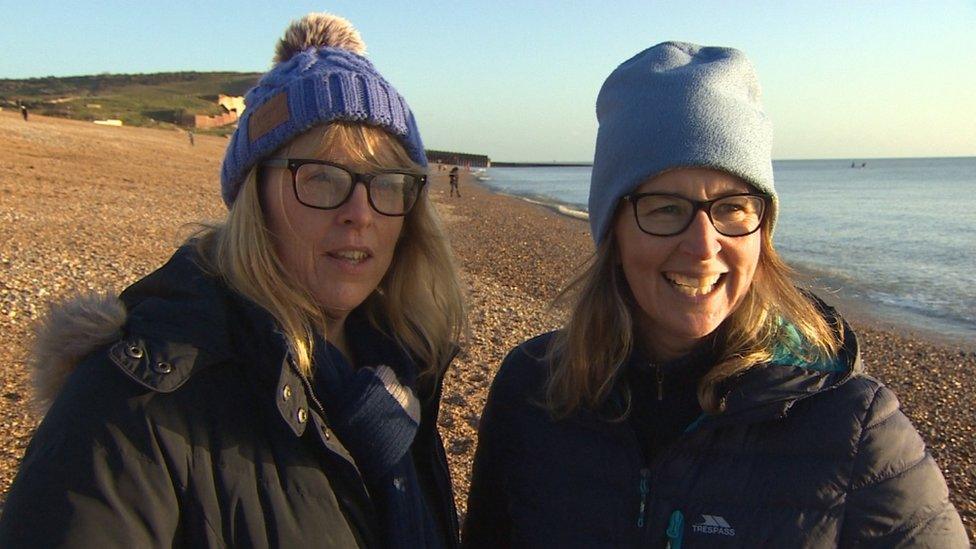
Emma Holter (left) and Lisa Glandfield pulled the turtle to shore
The vulnerable species of turtle was also found in British waters in 2016, off the north coast of Wales.
Nicknamed Menai, she was the first such turtle to be reported in UK waters since records began about 200 years ago.
Initially cared for by Anglesey Sea Zoo, she was later flown to Gran Canaria with a view to releasing her back into the wild, but her health deteriorated and she died in January 2018.
- Published19 January 2020

- Published29 August 2018
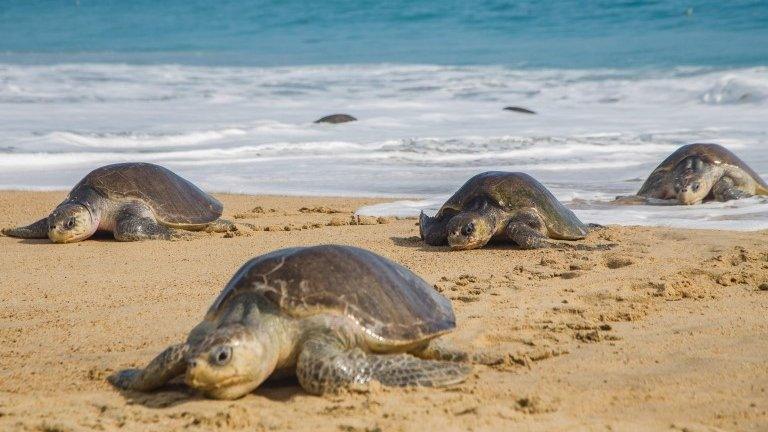
- Published19 January 2018
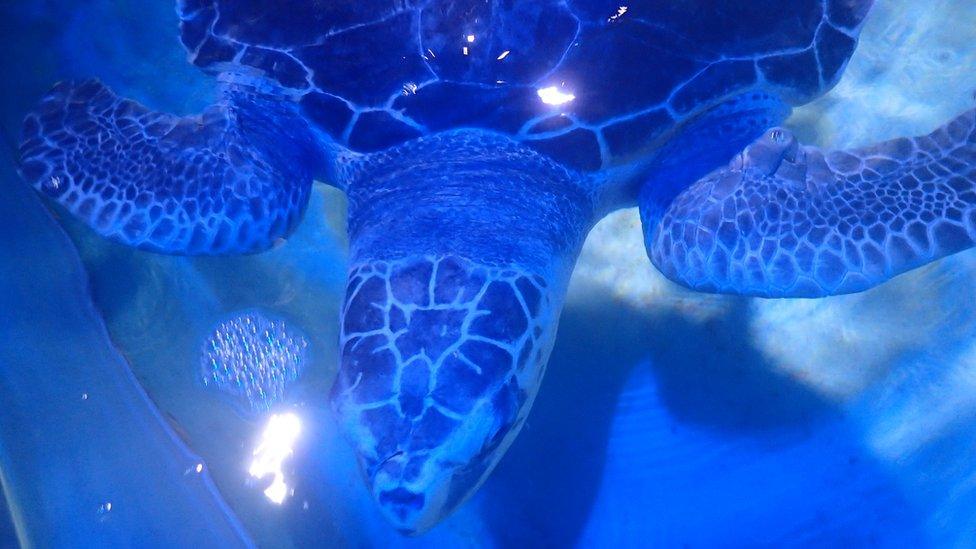
- Published15 November 2016
